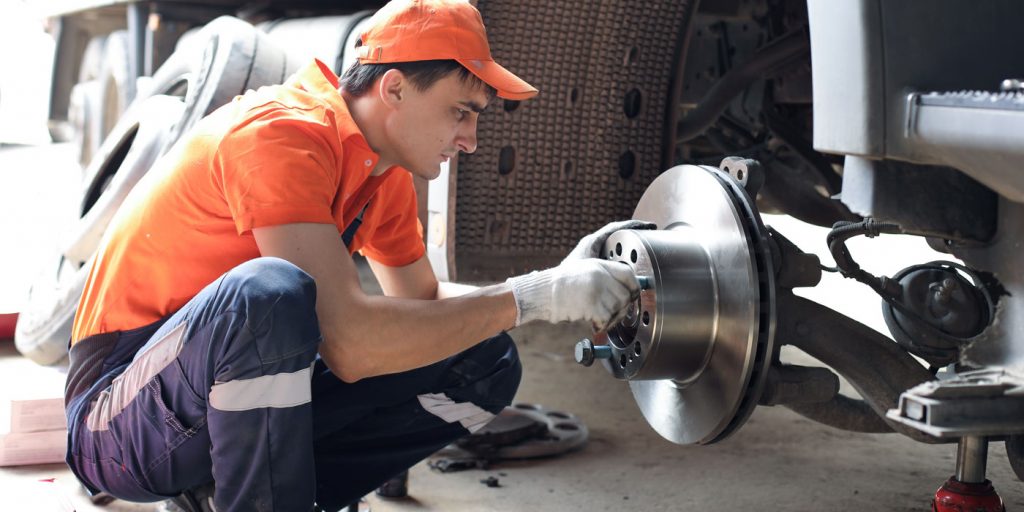In winter, road and weather conditions make it imperative to have properly maintained components at the wheel-ends. This tech tip focuses on preventive maintenance practices to keep brakes in good working condition when cold, snow and ice are the order of the day.
“Safety systems like full stability and collision mitigation can be valuable on winter roads, but they perform at their best only when the brakes at the wheel-ends are also in peak condition to deliver stopping power,” said Keith McComsey, director of marketing and customer solutions, wheel-end, at Bendix Spicer Foundation Brake. “The right preventive maintenance practices can make all the difference.”
Take a good look
Inspect air brake chamber housings for damage or corrosion and ensure that dust plugs are properly installed and seated. On air-disc-braked wheel-ends, check for cuts or tears on the protective boots.
“What you’re looking for here is anything that could allow corrosive materials to take hold,” McComsey explained. “Not just water, but things like harsh chemicals used to treat winter roads. Excessive corrosion of the chamber can lead to failure of the housing, and ripped or punctured boots can allow contaminants and moisture to get into an air disc brake caliper, causing corrosion and long-term damage.”
Air disc brake guide pins should also be inspected for slidability, and the shear adaptor cover needs to be in place and fully seated. Preparing air disc brakes for winter weather also means checking that the pads move freely in the carrier—if not, remove them and clean the carrier surface with a wire brush—and making sure the brake moves freely on its guidance system, which should be replaced if movement is restricted.
Lessons in lubrication
Effective lubrication is key in combating winter corrosion, particularly when it comes to automatic slack adjusters (ASA), according to McComsey.
“When you force new lubricant into an ASA, you’re achieving two goals,” he said. “First, you’re purging the old grease, along with any water or contaminants that found their way in; and second, you’re protecting the adjuster’s internal gear sets, clutches, and other components from wear.”
Lubricating an ASA is simple, requiring a technician to just locate the adjuster’s grease fitting, attach the hose from a grease gun, and inject new grease until old grease is forced through the release opening. (The release location varies depending on the ASA make and model.) The process should take less than a minute per adjuster.
Slack adjusters that don’t receive regular greasing may not maintain the correct brake stroke and provide optimal stopping power—a direct impact on safety.
Clevis pin connections, cam tubes, shafts, and bushings should also be lubricated to keep winter moisture at bay and prevent corrosion.
“Truck drivers have a lot to watch out for when they’re out on the roads in winter,” McComsey said. “The right wheel-end practices in the shop can help deliver peace of mind when it comes to their brakes.”
This tech tip was contributed by Bendix.














